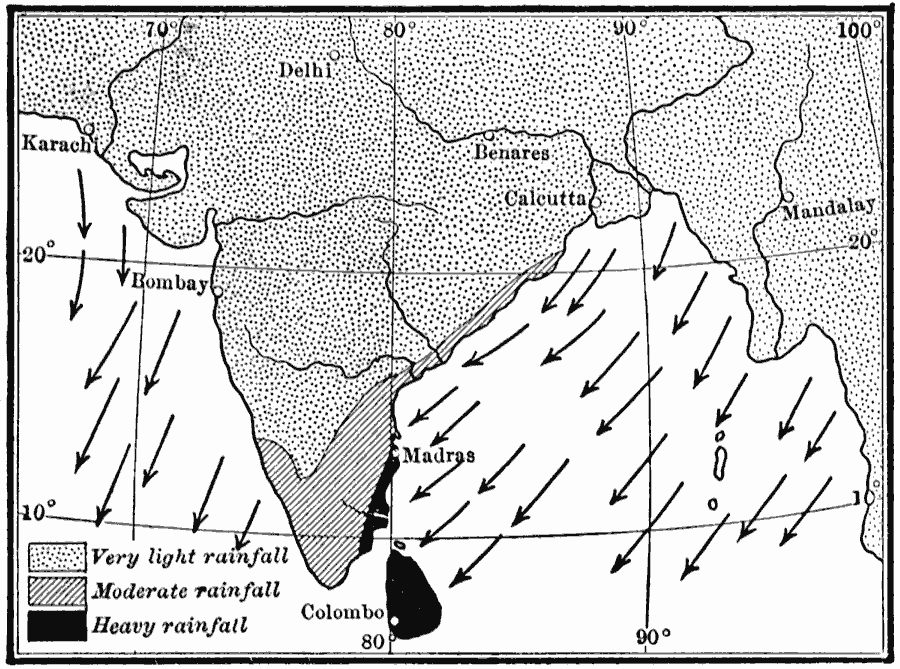Description: A map from 1910 of the Indian subcontinent and the Central Asia region showing the typical rainfall distribution patterns during the winter monsoons, keyed to show areas of rainfall ranging from very light to heavy rainfall. The map shows the prevailing wind direction during the season, with the winds blowing from the continent out over the Bay of Bengal and the Indian Ocean. "The sea breezes blow only for short distances. But when a large body of land, like a continent, becomes warm, air from the cooler ocean may blow toward it for hundreds of miles. In winter, on the other hand, when the land becomes cooler than the ocean, the cold air over a vast area may move toward the sea. Such winds exist in Mexico and our Gulf States; but they are far more important in Asia. The interior of that vast continent is so far from the ocean, that there are naturally great changes in temperature from summer to winter. During the winter, the heavy air over the cold land settles down as drying air, and presses outward beneath the warmer air which lies over the ocean. This produces dry winds from the land. In summer, on the other hand, the air over the cool water crowds in, raises the heated air of the continent, and produces ocean winds and rain. Winds which thus blow in opposite directions in different seasons, are better developed in India than in any other part of the earth; and it was here that they received the name, monsoon winds. [...] The rainy season comes in India when the summer monsoons blow; [...] The winter monsoon, on the other hand, is so dry that vegetation withers and the soil becomes parched and cracked, as in a desert." — Tarr and McMurry, 1910, pp. 217–218.
Place Names: India , Mumbai, �Colombo, �Kolkata, �Madras, �Chenna
ISO Topic Categories: climatologyMeteorologyAtmosphere,
inlandWaters,
location,
oceans
Keywords: Winter Monsoon in India, physical, �political, �meteorological, kClimate, physical features, country borders, rainfall,
winds, climatologyMeteorologyAtmosphere,
inlandWaters,
location,
oceans, Unknown, 1910
Source: Ralph S. Tarr, B.S., F.G.S.A. and Frank M. McMurry, Ph.D., New Geographies 2nd ed (New York, NY: The Macmillan Company, 1910) 218
Map Credit: Courtesy the private collection of Roy Winkelman |
|
